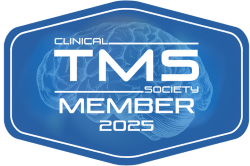
By Kristy Gonyon, LCPC, DMT, Therapist, Relief Mental Health in St. Charles, Ill.
Dance/movement therapy is one of several types of creative arts therapies used to support traditional therapeutic techniques for people with mental health diagnoses such as depression and/or anxiety.
Here’s how the American Dance Therapy Association (ADTA) defines dance therapy:
“Dance/movement therapy (DMT) is the psychotherapeutic use of movement to promote emotional, social, cognitive, and physical integration of the individual, for the purpose of improving health and well-being.”
Dance/movement therapy functions on the following basic assumptions:
- Movement is the first language we learn. Movement communication begins in the womb and continues throughout our lifespan.
- Nonverbal language is as important as verbal language.
- Mind, body, and spirit are connected.
- Movement comes in four primary types: functional, communicative, developmental, and expressive.
- Dance/movement therapists observe, analyze, and prescribe movement therapy exercises based on an understanding of the four primary types of movement.
Early research on dance/movement therapy shows it can help improve mental health symptoms associated with depression and anxiety by:
- Releasing neurotransmitters that improve mood
- Enhancing self-esteem
- Improving levels of mindfulness and quality of life
- Promoting social connection in group settings
Dance/movement therapy can serve as a complementary support that augments more traditional approaches. Creative arts therapies might not work for everyone. But when they do work, they’re often the missing piece that helps tie everything together. Dance/movement therapy is like that: for people who connect to the idea and practice, it can make a significant difference – and help reduce symptoms quickly.
The Evidence: Dance/Movement Therapy for Depression and Anxiety
Dance/movement therapy has been around since the 1940s; extensive research on its use and benefits started in the late 1980s. Summarized in a publication called “Dance/Movement Therapy for Depression: A Scoping Review,” here’s what the authors of a meta-analysis found.
Dance/Movement Therapy for Depression/Anxiety: Early Results
- A study in 1989 found hospitalized patients with depression reported improved depression scores after one therapeutic dance/movement session
- Research conducted in the late 1980s and published in 1989 showed dance/movement therapy improved scores for depression, morale, and self-esteem in middle-aged women.
- A study published in 2007 showed that participation in one session of traditional Israeli circle-dancing improved depression scores in patients diagnosed with clinical depression
- Research published in 2005 on dance/movement therapy in the adolescent population showed significant improvement in negative psychological symptoms associated with depression
Interest in dance/movement therapy for mental health resurfaced in the 2010s, as rates of mental health diagnoses increased across the country. This second wave of research interest included studies with larger sample sizes, more robust statistical analyses, and several random-controlled trials.
Dance/Movement Therapy for Depression/Anxiety: Recent Research
A study conducted on Chinese college-age students on seven different physical interventions for depression showed this order of effectiveness:
- Tai chi
- Yoga
- Volleyball
- Dance
- Running
- Basketball
- Badminton
A meta-analysis published in 2019 showed:
- Dance/movement therapy + treatment as usual (TAU) had a higher impact on decreasing levels of depression, compared to TAU without dance/movement therapy
- Dance/movement therapy alone decreases levels of depression, compared to no treatment
- Of the eight studies examined in the meta-analysis, data showed that in all studies, depression scores decreased, and the decreases persisted for several months
- Dance/movement therapy is effective for people with mild, moderate, or severe depression
- Dance/movement therapy is effective across a range of dosage and duration: patients showed improvement after one 90-minute session, patients showed improvement with 60-minute sessions five days a week, and patients showed improvement with 1-2 sessions of 30-60 minutes per week over 10-12 weeks
Another meta-analysis published in 2019 showed the positive impact of dance/movement therapy on:
- Depressive symptoms
- Anxiety symptoms
- Quality of life
- Affect (mood)
- Interpersonal skills
- Cognitive skills
A meta-analysis completed in 2021 – the largest study published to date on the impact dance and movement therapy on depression and anxiety – showed the following results:
- Positive benefits appear with a minimum of 2.5 hours of dance/movement therapy per week
- Impact on depression: moderate symptom reduction
- Impact on anxiety: significant symptom reduction
- Effect on stress: significant symptom reduction
The evidence is clear: dance and movement therapy can help reduce symptoms in patients with depression and anxiety. It works best when combined with traditional therapy (dance/movement + TAU), and positive benefits are most likely to appear when patients engage in dance/movement therapy for at least two and half hours per week.
How Does It Work?
There is often a misconception about dance/movement therapy. It’s not a dance performance of learned choreography. It’s not a performance at all and there are no rules. I often hear, “I’m not a dancer” from patients who might not think it’s a good fit for them and/or feel intimidated by its name. To put patients at ease, I explain that dance experience is not a requirement for dance/movement therapy. The intention is not to perform, but to provide another way to connect to their thoughts and feelings.
Dance/movement therapy can work in a variety of ways in a variety of contexts. In the studies above, therapists used dance/movement therapy in schools, in typical hospitals, in specialized psychiatric hospitals, in outpatient therapy, and during inpatient therapy.
However, despite the variety in style, setting, and application, dance/movement therapy sessions for depression and anxiety follow this general pattern:
1. Warmup and check in.
- Like any physical activity, a dance/movement session begins with an easy warm up. The goal of the warm up is to stretch the muscles and get the joints moving freely. In a dance/movement therapy session, the therapist and patient often decide on a theme, a concept, or a challenge to work through for that specific session.
2. General dance/movement.
- Before moving to the focus for the day, the dance therapist may take the patient through various movements related to the theme, in order to prepare for deeper exploration. This is a transition from the warm up to the focus concepts/themes/challenges for the session.
3. Focused therapeutic movement.
- During this phase of the session, the therapist introduces movements that will help the patient explore and process specific emotions.
- The therapist may also ask the patient to move without direction, and engage in any type of movement that expresses their current internal state, or how they feel now.
- The therapist may ask the patient to engage in movement that expresses their desired internal state, or how they want to feel.
4. The role of the therapist.
- Directing movement: the therapist may be specific about how they want the patient to move, and what movements they want them to do. For patients with depression, one common directive is to jump or hop, because research shows people with depression engage in less vertical movement than people without depression. For patients with anxiety, the therapist may recommend calm, soothing, relaxing movements, to counter the agitation associated with anxiety.
- Matching/mirroring: It’s common for a dance/movement therapist to get on the floor and move with the patient. The therapist will often match or mirror the patient’s movements exactly, without speaking. This gives the patient an idea of what they may be expressing in the moment, either consciously or unconsciously.
5. Breath, focus, mindful attention.
- Throughout a session – and especially during the focused therapeutic movement phase – the therapist will direct the patient to concentrate on their breathing: this keeps them calm and focused. They’ll also ask the patient to pay close attention to any physical sensations, emotions, or thoughts they have while dancing or moving.
- It’s important to stay in the movement zone during a dance/movement therapy session and keep the work nonverbal – talking comes next.
6. Cool down and debrief.
- The therapist will gradually bring the session to a close in a way that feels emotionally and psychologically safe and secure for the patient. They won’t bring a patient to an intense emotional state and then say, “That’s all we have time for today.” Instead, they direct the patient in movements designed to ground, recenter, and refocus.
- At the end of a session, therapist and patient talk through what occurred during the dance/movement therapy session. They’ll discuss any emotions related to their depression or anxiety diagnosis, and help the patient process those emotions in a healthy and productive manner.
Different therapists have different approaches, but each session might follow the same basic outline shown above. What changes from therapist to therapist are the details: exactly which movements occur, how they help patients make connections between what they experience during a therapy session, and how they can apply those lessons to their daily life, among other things.
Movement Helps, Therapeutic Movement Heals
Our patients with depression and anxiety benefit from moving their bodies as it provides them the opportunity to connect with emotions they are not used to experiencing. With the support and guidance of dance and movement therapy, patients can identify emotions, process them, and feel them in a safe and encouraging environment.


